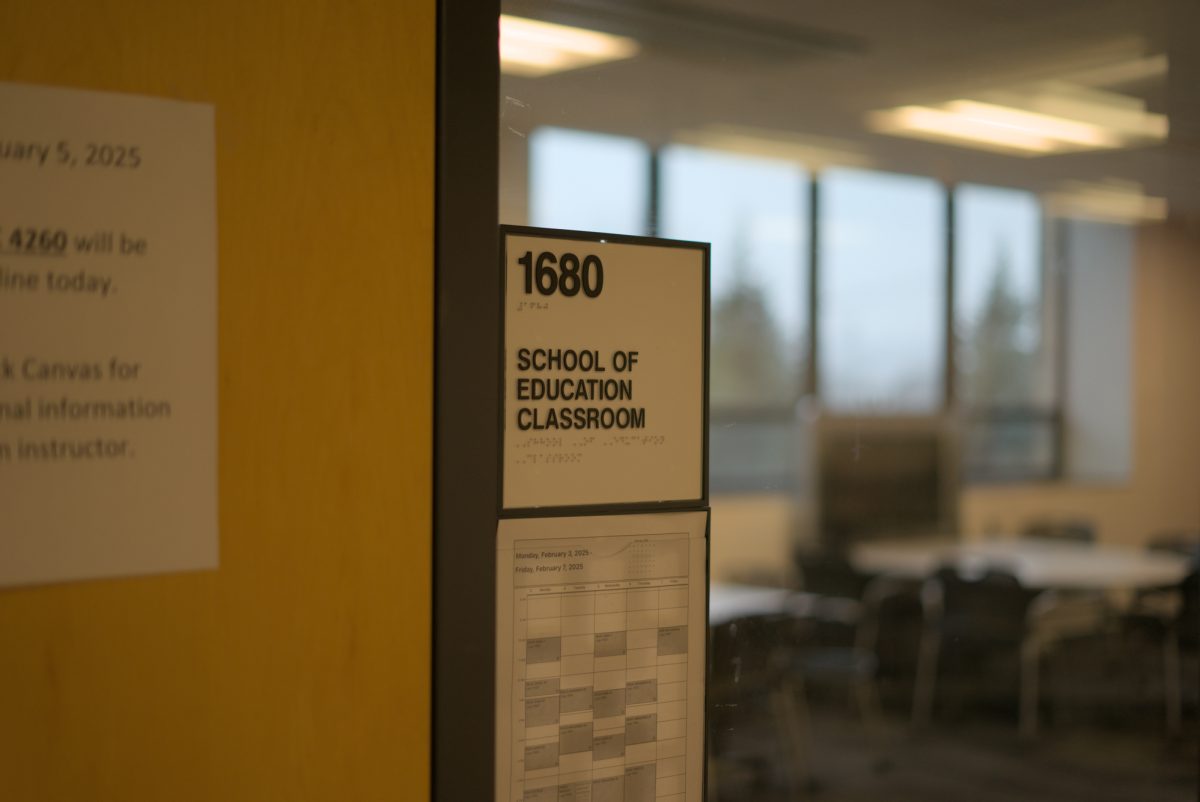- News
- News / Politics And Administration
- News / Politics And Administration / Campus
- News / Student Life
As international student admissions decline nationwide, Iowa State addresses issue
March 9, 2020
International student enrollment at Iowa State has been on the decline for the past two years with 2019 hitting an all-time low.
In 2016, there was about 0.5 percent increase in international student admissions, according to the Office of Institutional Research at Iowa State University. In 2017, there was no change in the admissions percentage.
Recently, the number of international student admissions has begun to decline. There was a decrease of over 400 students in 2018 enrollment numbers, followed by another decrease of 473 students in 2019 fall enrollment.
Katharine Suski, director of admissions at Iowa State, said the decline can be due to a large number of reasons.
“[For undergrads especially,] there’s been a shift in the landscape with a number of factors,” Suski said. ”We’ve certainly seen less interest from core countries, China especially. It’s been felt throughout the country, and there’s a lot of efforts to try and combat it, but it is what it is. Less students are wanting to study in the United States.”
When asked a similar question last November, Rachel Banks, president of public policy at the National Association of Foreign Student Advisors, said to CNN, “Largely, it’s been the policies and rhetoric from the current administration that’s really driven the numbers to move in that direction.”
The decline of international students isn’t just affecting Iowa State; people are talking about it across the nation.
On the east coast, Caroline Casagrande, deputy assistant secretary for academic programs at the U.S. Department of State’s Bureau of Educational and Cultural Affairs and spokesperson of the Trump administration, suggested that it’s the high cost of schools here turning people away.
Meanwhile, on the west coast, Luke Robins, president of Peninsula College, said it’s a mix of the two. The U.S. dollar is high enough to make other nations more attractive, but the increased difficulties of getting a visa are a much more pressing issue, with tensions in domestic Chinese politics complicating matters even more.
While the exact percentages fluctuate, admissions data indicates that year to year, international students make up about 10 percent of the student body, according to the Office of Institutional Research at Iowa State University.
“It’s an important population, bringing diversity of thought and experience,” Suski said. “Their experiences can impact the learning of other students, and it expands the culture of our campus.”
Additionally, there is a financial aspect to this decline: international students pay slightly higher tuition.
International students pay about 6 percent more than non-Iowan resident tuition, which is about 250 percent the cost of in-state tuition on average, according to the Office of the Registrar at Iowa State University. They also don’t receive financial aid, making them a big component of the Iowa State pocketbook.
Suski gave insight into one strategy Iowa State is employing to combat the decline.
“One long-term strategy of ours is to diversify, not focusing on just one country,” Suski said. “Some schools have most of their students come from China, and that’s never really been the case for Iowa State. We have always had a really good mix. We have students from 110 to 120 countries represented each year, and that shows that [our diversification] is working.”
Iowa State, at its most imbalanced, had 45 percent of its international students from one country — China — and that’s dropped off since this peak.
As of 2019, China accounts for about a third of Iowa State’s international students, which is in line with nationwide averages. In the face of flagging Chinese admissions, one place that Iowa State has put extra effort into is Brazil, Suski said.
“We haven’t grown a lot, but we have built great relationships with schools there,” Suski said. Brazil ranks sixth in international enrollment this year, following China, India, South Korea, Malaysia and Iran.
Brazilian student admissions went down 5 percent between 2018 to 2019, but the decrease was slightly lower than the average rate of admissions decline among the top 25 nations admitted.
Iowa State’s growing relationship with Brazil is an example of another strategy it is employing to counteract the declining enrollment numbers, Suski said, where prospective students are sent on trips with a partner to build relationships between Iowa State, students and international schools.
Recently, the spread of coronavirus across the globe has been impacting study abroad programs, even at Iowa State.
Currently, Iowa State’s response has been ordering the suspension of all international travel sponsored by the university, recalling any people in a nation the Centers for Disease Control and Prevention (CDC) has given a level-3 travel health notice — China, South Korea and Italy — as well as urging students to check the CDC’s website for updates as spring break looms.
“It’s really hard to say [if it will impact enrollment] since it’s so early,” Suski said. “It’s definitely too early to know.”
Even as the situation changes around the country, other universities may show a glimpse of Iowa State’s future — Penn State is canceling admissions events on campus for the month of April, moving instead towards online information and digital campus tours.
Additionally, Princeton and NYU are moving all of their classes to be online-only in the coming days and weeks.
The four nations that have more than 7,000 reported cases of Coronavirus each — China, Italy, South Korea and Iran — made up 44.86 percent of Iowa State’s international enrollment in 2019, according to the Office of Institutional Research at Iowa State University.







